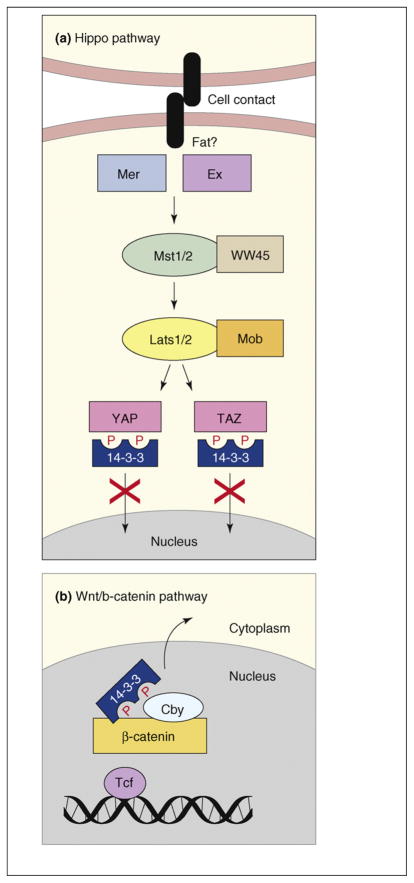Figure 4.
Functions of 14-3-3 in tumor-suppressor pathways. (a) The mammalian Hippo pathway transmits signals received at the cell surface, such as cell–cell contact, through the sequential activation of the Mst1/2–WW45 and Lats1/2–Mob kinase complexes. The Lats kinases phosphorylate YAP and TAZ on sites that mediate 14-3-3 binding, thus, inactivating the function of these transcriptional coactivators by means of their cytoplasmic retention. (b) β-catenin functions as a transcriptional coactivator in the Wnt signaling pathway. Cby antagonizes β-catenin signaling by preventing the interaction between β-catenin and the Tcf transcription factor enhancer and by mediating the formation of a stable β-catenin–Cby–14-3-3 tripartite complex that results in the nuclear export of β-catenin.

